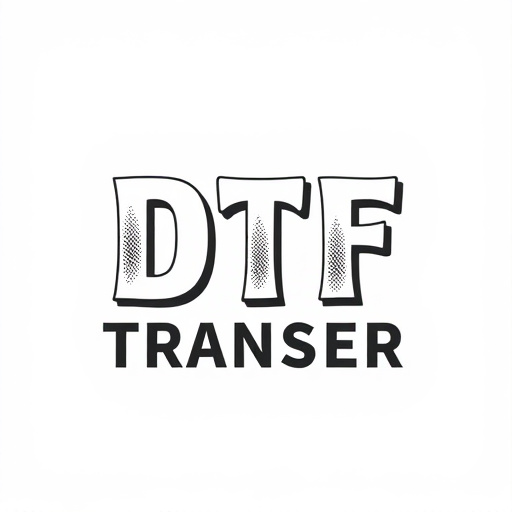Direct-to-Film (DTF) transfer printing revolutionizes product customization with intricate designs on diverse materials. Fast production times, cost savings, and versatility make it popular in fashion, signage, and branding. Fabric selection is crucial, favoring smooth, non-porous synthetic materials like polyester for high-quality DTF prints. Surface properties like texture and porosity impact print quality and durability, requiring careful consideration for optimal DTF applications. Best practices include proper surface preparation, fabric priming, and compatible ink-surface interactions to ensure long-lasting, vibrant DTF transfers and prints.
In the realm of direct-to-film (DTF) application, choosing the right fabrics and surfaces is paramount for achieving high-quality, durable prints. This article delves into the intricacies of DTF transfer, guiding you through key considerations for optimal fabric selection. We explore surfaces that enhance DTF printing quality, analyze common fabric types, and delve into factors influencing print durability. By following best practices, you’ll unlock superior DTF results, ensuring vibrant, long-lasting prints.
- Understanding Direct-to-Film (DTF) Transfer: A Brief Overview
- Key Considerations for Choosing Optimal Fabrics
- Surfaces That Excel in DTF Printing Quality
- Common Fabric Types and Their DTF Suitability
- Factors Influencing Print Durability on Different Surfaces
- Best Practices for Achieving Superior DTF Results
Understanding Direct-to-Film (DTF) Transfer: A Brief Overview

Direct-to-Film (DTF) transfer is a cutting-edge printing technique that has revolutionized the way we produce personalized and customized products. This method eliminates the need for traditional printing plates, allowing designers and manufacturers to create intricate patterns and designs directly onto various surfaces. DTF involves applying ink to a substrate using a specialized print head, which then bonds with the material during heat treatment, resulting in durable and high-quality prints.
DTF Printing offers numerous advantages, including faster production times, cost-effectiveness, and exceptional versatility. It enables the application of designs on an array of materials, from textiles and plastics to metal and wood. This technology has gained immense popularity across industries, such as fashion, signage, and product branding, where unique and visually appealing finishes are sought after. With DTF, brands can now quickly adapt to changing market trends and consumer demands, ensuring their products stand out in a competitive landscape through innovative DTF prints.
Key Considerations for Choosing Optimal Fabrics

When selecting fabrics for direct-to-film (DTF) applications, several key considerations come into play to ensure optimal results. The primary focus should be on choosing materials that offer a smooth and even surface for the DTF transfer process. This involves evaluating factors like texture, porosity, and overall fabric composition. For instance, synthetic fabrics like polyester or nylon often provide a more consistent surface, making them ideal for precise DTF printing. Their non-porous nature helps maintain the integrity of the design during the heat application stage.
Additionally, considering the intended use and environment is crucial. Fabrics used for outdoor applications should be durable and weather-resistant to withstand exposure to sunlight and varying temperatures. On the other hand, textiles meant for indoor use may prioritize comfort and breathability. The DTF Printing technique itself also influences fabric choices; certain fabrics may have unique properties that enhance adhesion or allow for more vibrant prints, ultimately impacting the final quality of the DTF prints.
Surfaces That Excel in DTF Printing Quality
When it comes to direct-to-film (DTF) application, the choice of fabric and surface plays a pivotal role in determining the final quality of the DTF transfer and prints. Surfaces that excel in DTF printing are typically smooth, non-porous, and free from any textures or imperfections that could hinder ink adhesion. This ensures that the vibrant colors and intricate details of the design are accurately reproduced on the final product.
For optimal DTF printing results, synthetic materials like polyester and vinyl prove to be excellent choices. These fabrics offer a smooth surface, excellent ink compatibility, and superior durability. Additionally, their non-porous nature prevents ink from seeping into the fabric, preserving the clarity and vibrancy of DTF prints. This makes them ideal for creating high-quality, long-lasting DTF transfers on a variety of products.
Common Fabric Types and Their DTF Suitability
In the realm of direct-to-film (DTF) application, understanding fabric types is paramount for achieving optimal results in DTF transfer and printing. Common fabrics can range from natural fibers like cotton and linen to synthetic materials such as polyester and nylon. Each type presents unique characteristics that directly influence the quality of DTF prints. For instance, cotton’s porous nature allows for vibrant DTF prints, making it a popular choice for textiles. On the other hand, synthetic fabrics offer advantages like quick drying times and superior colorfastness, properties that are highly sought after in industrial DTF applications.
When considering DTF suitability, texture plays a significant role. Smooth surfaces facilitate easier ink transfer, resulting in crisp, detailed DTF prints. Fabrics with intricate patterns or raised textures might present challenges, as these can interfere with the direct contact between the film and fabric, potentially leading to imperfections in the final DTF prints. Therefore, for optimal DTF printing, selecting fabrics with minimal texture and suitable porosity is essential to ensure the longevity and vibrancy of the applied designs.
Factors Influencing Print Durability on Different Surfaces
Several factors play a pivotal role in determining the durability and longevity of DTF (Direct-to-Film) transfers on various surfaces. One of the primary considerations is the compatibility between the fabric or surface and the ink used in DTF printing. Different materials, such as cotton, polyester, or synthetic blends, absorb inks differently, impacting print quality and longevity. For instance, porous fabrics like cotton can lead to better ink absorption, enhancing the vibrancy of colors but potentially affecting the transfer’s durability against fading or scuffing. On the other hand, non-porous surfaces like vinyl or certain types of plastics may provide a more robust bond for DTF prints, ensuring higher longevity and resistance to environmental factors.
The smoothness and texture of a surface also influence print quality and durability. Rough or uneven surfaces can cause ink bleeding or irregular printing, reducing the overall aesthetic appeal and durability of DTF prints. Smooth, flat surfaces like high-quality vinyl or film offer optimal conditions for precise ink application and subsequent adhesion, resulting in more long-lasting DTF transfers. Additionally, factors like surface preparation, cleaning, and priming are crucial steps to ensure that the substrate is ready for DTF printing, enhancing the final product’s durability and preventing issues like ink lifting or delamination over time.
Best Practices for Achieving Superior DTF Results

To achieve superior results with Direct-to-Film (DTF) transfers and printing, best practices include ensuring optimal fabric and surface preparation. The key is to start with clean, smooth surfaces free from any contaminants or debris that could hinder adhesion. This often involves proper cleaning techniques using suitable solvents or dedicated cleaners designed for DTF applications. Additionally, priming the surface can significantly enhance bond strength by creating a more receptive layer, especially on challenging materials like vinyl or textured fabrics.
Another critical aspect is selecting the right fabric types that are compatible with DTF printing methods. Some fabrics inherently provide better adhesion and dimensional stability than others. For example, polyester-based materials are commonly preferred for their ability to withstand heat and maintain print integrity during the transfer process. Additionally, proper drying conditions, including temperature and airflow, are essential to prevent moisture-related issues that can compromise the quality of DTF prints.














